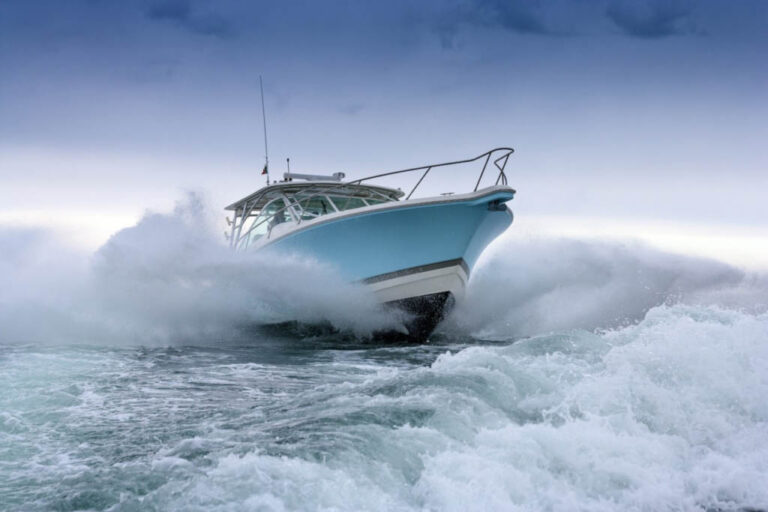When you go skiing in the winter, each hill is labelled with sign that denotes the degree of difficulty so that you can match your skill level to a hill within your own personal skill limits. Each hill has a green, blue, or black sign, to mark the difficulty level. All you need to know is your own personal skill level. For example, if you are not an expert skier, you would never dream of heading for a hill with the ominous black diamond.
There are similar labels for sea conditions that help boaters determine if they are safe to go boating. Perhaps the most famous sea condition scale is the Beaufort Scale. This simple description of water conditions was developed in 1805 by British Rear-Admiral Sir Francis Beaufort, an Irish hydrographer. The scale starts with 0 and increases to a force of 12. In addition to wind speeds, each number is accompanied by a description of sea conditions. But there is a problem for those of us who are not full time commercial captains — we will not find a sign at the end of our dock or a boat ramp that gives us the latest Beaufort Scale sea description.
No worries. I will tell you two simple things to do that will ensure you do not find yourself in water conditions that make you and your passengers uncomfortable. You never want to find yourself ‘in water over your head’.
First, you must know your own personal limits. Nobody knows your own comfort zone as well as you do. For this reason, the true definition of ‘bad water’ varies with each individual boater. Take the time to look at the water conditions and be honest with yourself. Think back on your boating history in brisk winds and poor weather. Do you have any concerns with sporadic white caps pushed up by significant winds? Are you experienced with driving in the type of weather you are observing? Will your passengers enjoy the trip, or will it be a white knuckle ride? Do you really need to go out in the boat today, or would you ‘feel’ better wailing for improved weather? This simple self-directed weather evaluation is the smart thing to do before every boat outing.
In your pre-cruise weather evaluation, be sure to consider your boat. Two different boaters may have the same experience and comfort zone, but one may have a bowrider with low gunnels and the other a larger deep V hull. One boat might be a single engine and another a twin. So, in addition to how you interpret the water conditions, think about the capabilities of your vessel. Of course, the number of passengers that you are taking will also play a part in your well being. Remember that each adult adds an average of 160 lbs to your total weight, and if your fuel tank is full that would be at least an additional 240 pounds (depending on its size) so you might unintentionally exceed your boat’s recommended weight limit before even heading out into bad weather.
Once you have looked at the water where you plan to boat, and it seems okay according to your own confidence scale and boat capability, your second step is to check a current weather report. This will tell you if the winds will be decreasing or increasing over the next few hours. It will also advise of precipitation, visibility, sunset and perhaps tides that might influence your final ‘go or no-go’ decision. Be assured that weather never stays the same for very long, so you need to know if it is forecast to improve, or get worse. When weather is questionable, this check of a published current forecast in addition to your own personal observation, is essential before you cast off.
Knowing what bad water looks like to you, take a close look at what you see. Then check a forecast before you set out. Get in the habit of following these two simple steps prior to every time you boat and you will dramatically reduce the possibilities of a nasty trip. In my next article “Navigating Bad Weather,” I will describe some important handling steps you should follow to keep safe when and if you find yourself in what you consider to be “bad weather.”







